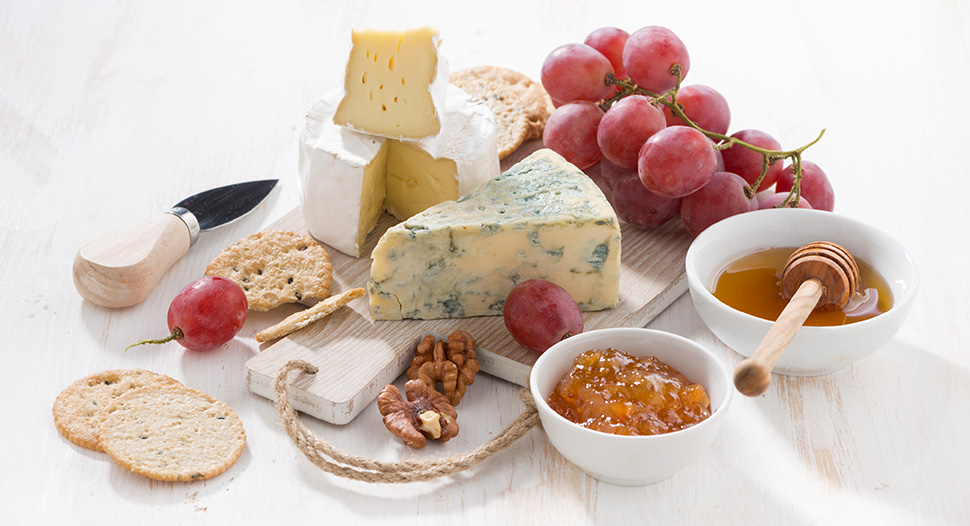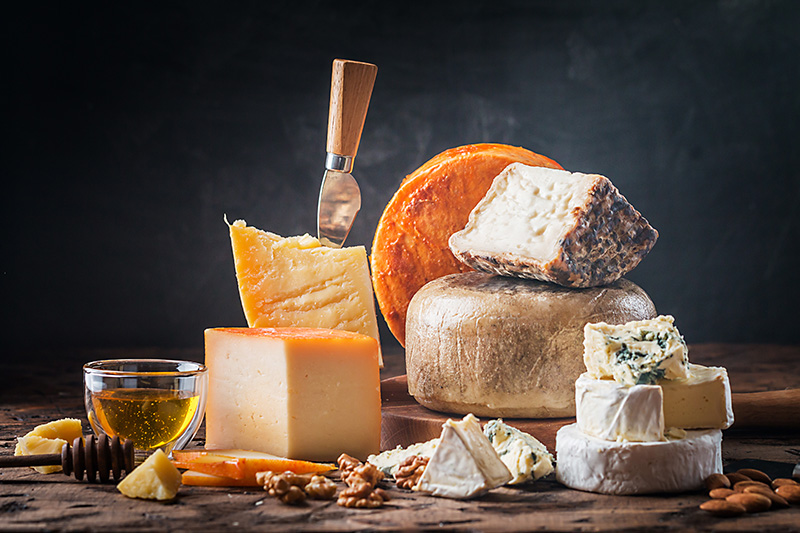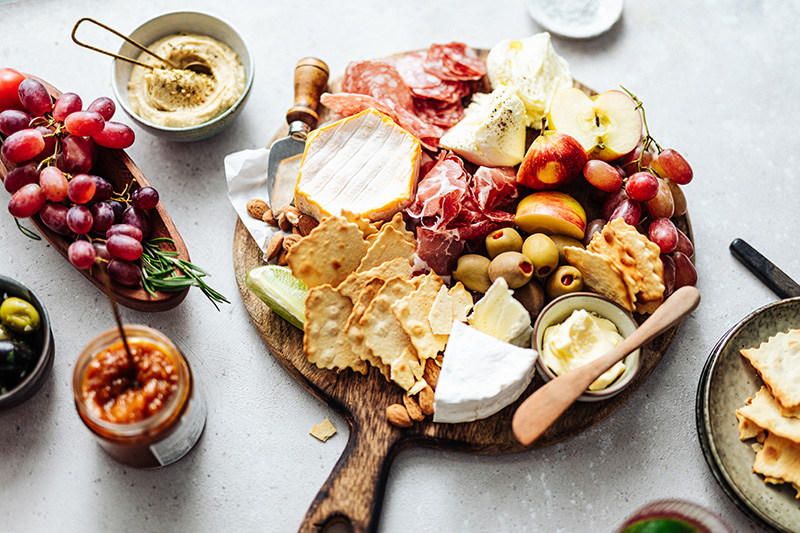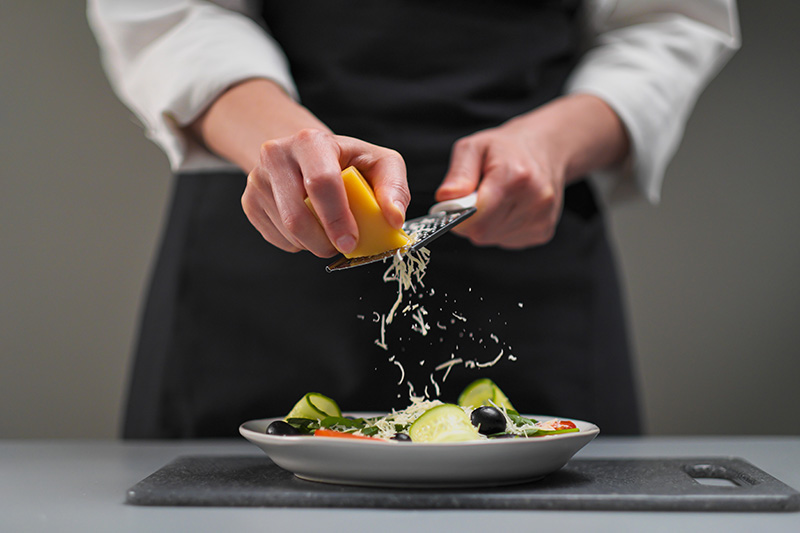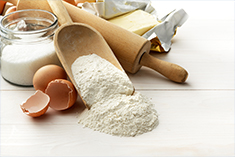Cheese Textures and Styles
Considering that there are nearly 2,000 varieties of cheese in the world, each with their own unique flavours and tasting notes, texture and style is an easy way to categorise them. Understanding the different textures will help you to choose the right cheese for the right occasion, while a knowledge of cheese styles can help you select new cheeses to try on your cheese tasting journey.
This section explores the 6 categories of cheese, gives examples of food and drink that pair well with cheese in that category, and provides storage tips for each category.
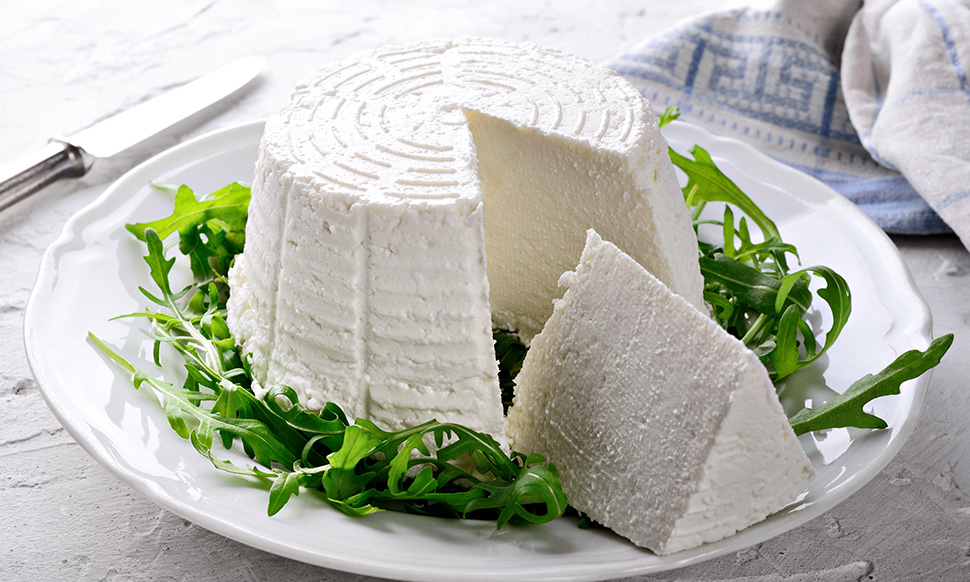
Fresh & Curd Cheese
Includes: Ricotta, Cottage cheese, Cream cheese, Feta, Mascarpone
- Wines: Light, refreshing whites such as a young Riesling or Sémillon/Sauvignon Blanc blends, sparkling wine, Rosé
- Beer: Aromatic styles such as wheat beer
- Tea: Delicate, floral styles such as Oolong or Jasmine
If enjoying as part of an antipasto platter or salad, remove from fridge about 15 minutes before serving (to take off the chill) and drain excess liquid.
- SWEET PARTNERS
Grilled stone fruits, fresh or grilled figs, fresh mint and pomegranate molasses - SAVOURY PARTNERS
Olives, cured meats, pesto, Mediterranean vegetables, ripe tomatoes, fresh basil, extra virgin olive oil, focaccia or Turkish bread or grissini (breadsticks)
Store in an airtight container with the liquid
- Wines: Sparkling wine, heavier whites such as Chardonnay or Verdelho, or medium-bodied reds such as Pinot Noir and Merlot/Cabernet Sauvignon blends
- Beer/cider: Light, effervescent styles such as pilsner and pear cider
- Tea: Darjeeling and other ‘afternoon-style’ teas
- Whisky: Lighter styles such as Lowland and Speyside malts
Cooking at high temperatures is not recommended. However, whole cheeses can be baked gently until just warm and oozing.
- SWEET PARTNERS
Fresh stone fruits such as nectarines and apricots or cherries, strawberries, raspberries or blackberries; fresh or baked apples and pears; and fruit bread - SAVOURY PARTNERS
Roast chicken, ham, nuts, white baguette, lavosh, smoked salmon and thyme
Remove any plastic and wrap the cheese in a cheese cloth or baking paper
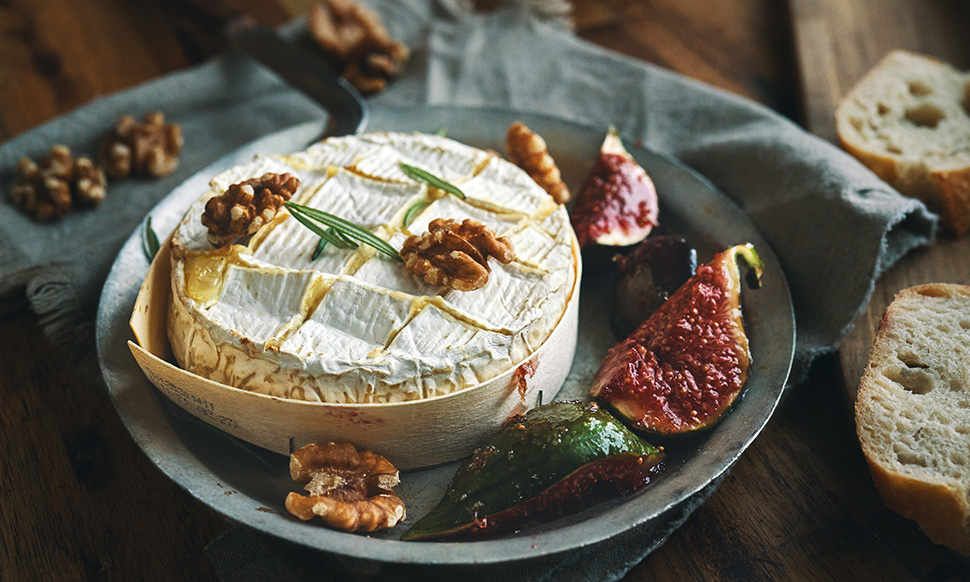
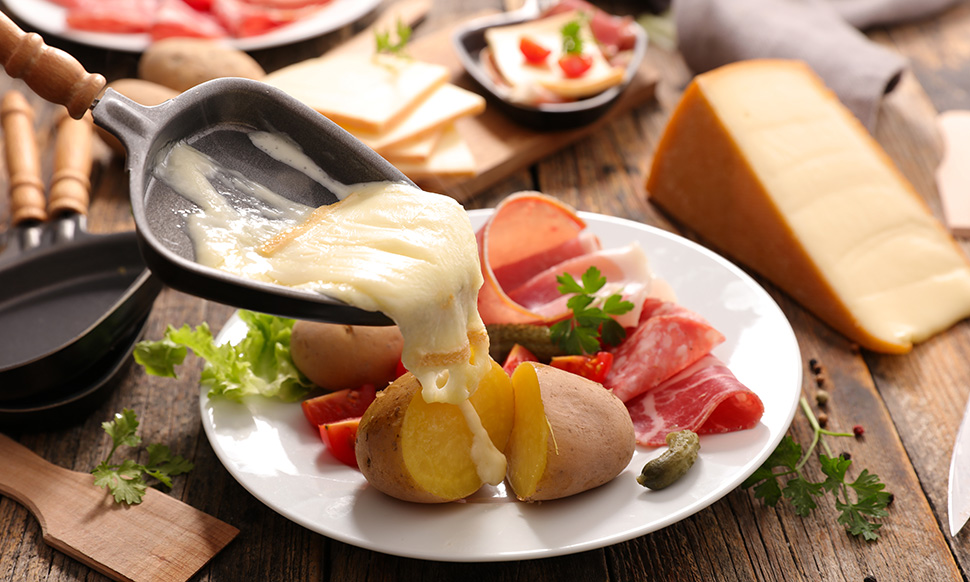
Semi-Hard Cheese
Includes: Edam, Raclette, Gouda
- Wines: Aged whites such as Sémillon or Chardonnay
- Beer: Aromatic and malty styles such as brown and amber ales
- Whisky: Richly flavoured aged single malts
- Tea/coffee: Nutty, savoury green teas such as Japanese Sencha and Long Jing (Dragon Well), or black coffee
Most are excellent when used as a grilling or melting cheese or in fondue.
- SWEET PARTNERS
Muscatels, dried apples or pears, hazelnuts, walnuts or pecans and fruit and nut bread - SAVOURY PARTNERS
Hamburgers and steak sandwiches, mustard, cornichons, dill pickles and relishes, smoked and cured meats, ham, melt over potatoes, gnocchi, mushrooms, asparagus and soups; baked into muffins, breads or quiches and sourdough or rye bread
Remove any plastic and wrap the cheese in a cheese cloth or baking paper
- Wines: Sparkling wine, aged whites such as Chardonnay or Riesling, Italian and Spanish varietal reds such as Tempranillo and Sangiovese, fortified wines such as Tawny or Topaque
- Beer: Heavier styles such as brown and amber ales, porter and stout
- Whisky: Richly flavoured aged single malts
- SWEET PARTNERS
Fresh or dried pears, apples or figs, roasted almonds or hazelnuts and aged balsamic vinegar - SAVOURY PARTNERS
Tomatoes, olives, fresh herbs, chicken, Mediterranean vegetables such as zucchini and eggplant; shaved onto pizza, salads and cooked asparagus; grated onto pasta, risotto or omelettes; stirred into soups; mixed into meatballs or burger patties; combined with breadcrumbs or ground almonds and fresh herbs to crumb meats and vegetables
Remove any plastic and wrap the cheese in a cheese cloth or baking paper
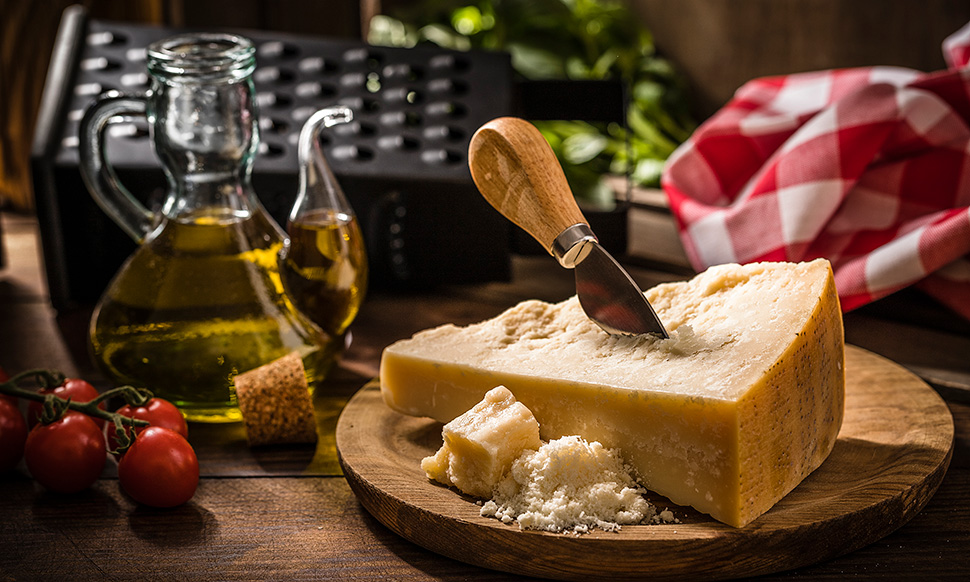
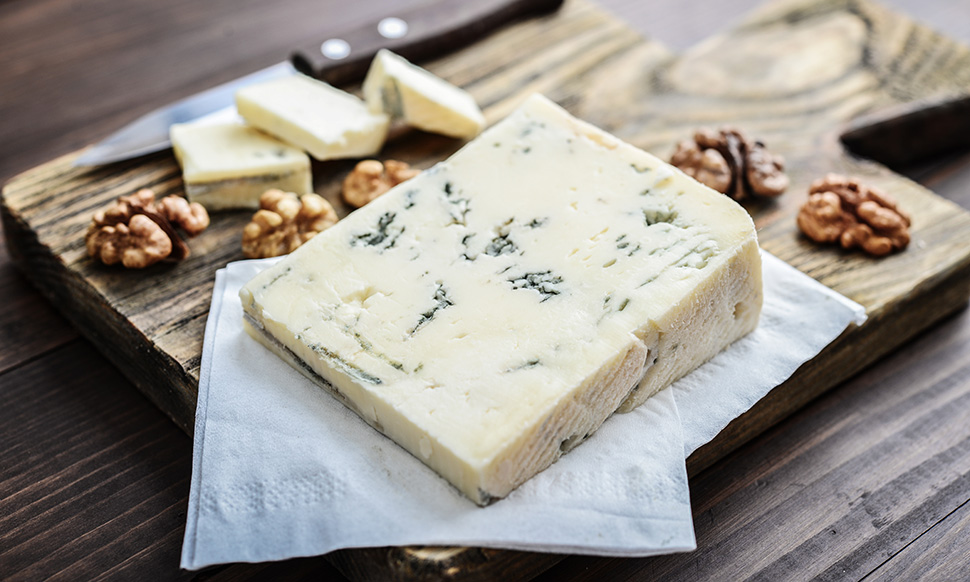
Blue Cheese
Includes: Bleu d’Auvergne, Gorgonzola
- Wines: Sweet wines including fortified wines such as Tawny or Topaque, dessert wines, a sweet Riesling or Gewürztraminer
- Beer: Dark ales such as stout or porter
- Whisky: Bold, smoky styles such as Islay malts
- Tea: Smoky teas such as Tie Guan Yin or Pu Er
- SWEET PARTNERS
Honey, quince paste and other fruit pastes, walnuts and pecans, fresh or dried figs, fresh or roasted pears, muscatels, dates and fruit and nut bread - SAVOURY PARTNERS
Pork, steak and smoked meats; shaved over asparagus, mushrooms, roasted beetroot or pumpkin; crumbled onto salads; combined with sour cream as a sauce for potatoes or steak, or to use as a dip; melted through cream as a sauce for pasta or gnocchi, or stirred into risotto. Avoid pairing with acidic foods.
Remove any plastic and wrap in cheese cloth or baking paper, and store in airtight container
Goat Cheese
Includes: Chèvre
- Wines: Light, refreshing whites such as Sémillon/Sauvignon Blanc blends and Pinot Gris/Grigio, Italian varietal reds such as Sangiovese, Rosé
- Beer: Light, effervescent styles such as pilsner
Remove from fridge about 15 minutes before serving to take off the chill.
- SWEET PARTNERS
Fresh berries, seasonal fruits, honey, grated citrus rinds, jams, stewed fruits, chocolate, nuts, spices and liqueurs - SAVOURY PARTNERS
Fresh or roasted tomatoes, olives, smoked fish, cured meats, roasted Mediterranean vegetables (capsicum, eggplant, zucchini), savoury jams, fresh herbs (basil, parsley, dill, mint), flatbread and grissini (breadsticks)
Store in original wrapping or container
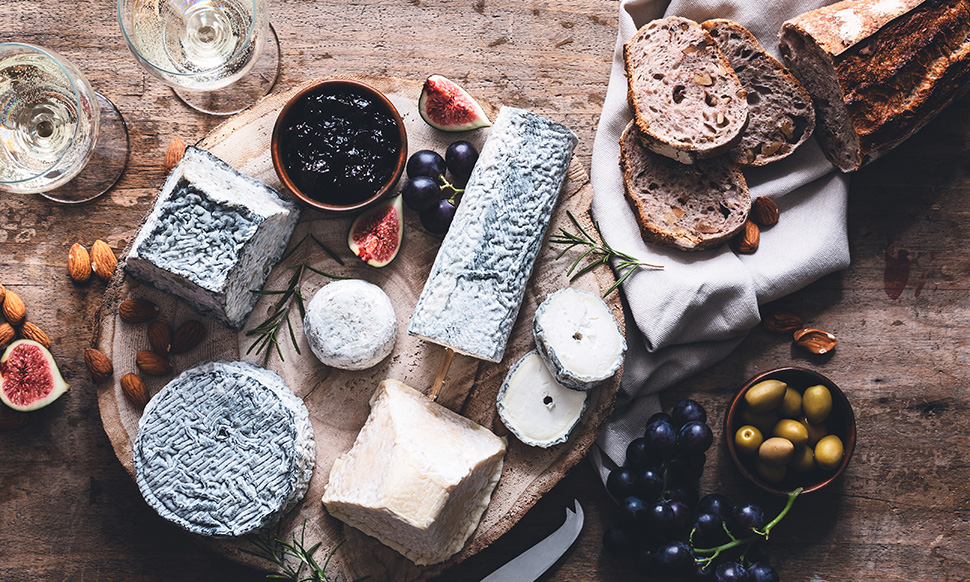
How to Create a Cheese Platter
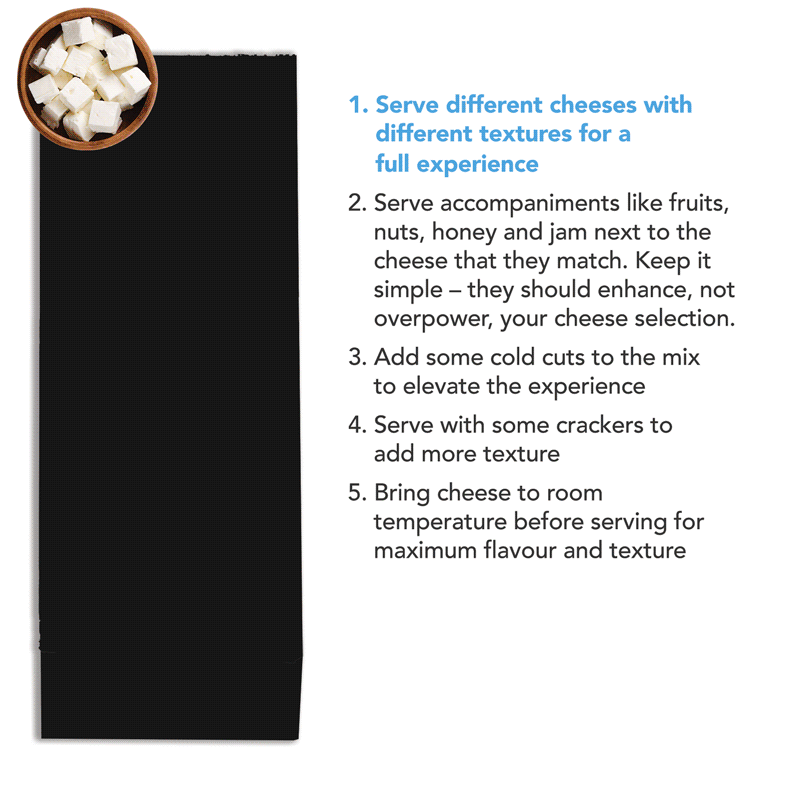
Cooking Tips
Got a burning question about when to cook your cheese or how to find the right cheese to melt? We’re here to help! In this section, you’ll find the answers to help you unlock the full potential of cheese in your cooking. Get ready to elevate your dishes with cheese!
If you’re shredding the cheese before cooking with it, be sure to do so while it’s cold, lest it turn to mush. This goes for hard cheeses as well. Ideal ways of shredding cheese are with a knife, a food processor or a good, old-fashioned cheese grater. Fresh and/or soft cheeses may not need to be shredded at all — you can just crumble them with your fingers.
Well, that depends. Do you like the way the rind tastes? Then feel free to add it! Some rinds are pretty intense, though, so it may be wise to remove one-half to three-quarters of it if you want to avoid dramatically changing the flavour of your dish. Of course, all wax or otherwise non-edible rinds should be removed before cooking.
Cooking a cheesy casserole at too high a temperature may break your cheese sauce, so keep it at 190ºC or below. If you want to brown the top of the dish, a quick trip under the broiler if your oven will do the job just fine.
Pro-tip: When cooking cheese, always cook on low heat and always add the cheese last!
If you’re simply melting shredded or crumbled cheese into a hot dish — such as a bowl of freshly-cooked pasta, a plate of hot vegetables, or a warm salad — toss the cheese into the hot food just before you serve it (and not a second sooner, or it’ll settle to the bottom of the dish and harden there like concrete).
If you’re throwing a fat slice of cheese onto your burger, do it about 2 minutes before you remove the meat from the heat in order to assure proper meltage. There are fewer burger buzzkills more potent than a warm, tender burger topped with a piece of cold, waxy, unyielding cheese.
Don’t think you need to limit yourself to only hot dishes. Cheese chunks go great tossed into a cold pasta or a produce-based salad with a little vinaigrette. Fresh cheeses, such as chèvre and queso fresco, are particularly stellar for this purpose.
Different cheeses melt differently. To pick the best cheese for your needs, take a look at the list below.
For hot toppings or fillings
Look for: “Stretchy Melters” — they become stringy and elastic when melted
Examples: Mozzarella, Gruyère, Raclette
For sauces or dips
Look for: “Creamy Melters” — they become oozy, smooth and creamy when melted
Examples: Blue cheese, Cheddar, Brie, Camembert, Gouda, Edam
Some cheeses simply will not melt (or melt fully), and that’s because they’re not supposed to.
For salads or cold dishes
Look for: “Non-Melters” — they soften but retain their shape when heated
Examples: Feta, Ricotta, Halloumi, Chèvre
Cheeses such as fresh mozzarella, ricotta, cottage cheese and feta won’t fully melt no matter how much you heat them. Of those that do melt, they can do so differently: chèvre, edam, gruyère and cheddar will all melt into very different textures. Experiment and see which does what!
Learn more about each type of cheese
Each variety of cheese has its own unique personality, from the creamy indulgence of brie to the complex sharpness of cheddar. Find out more about individual cheeses in this section.
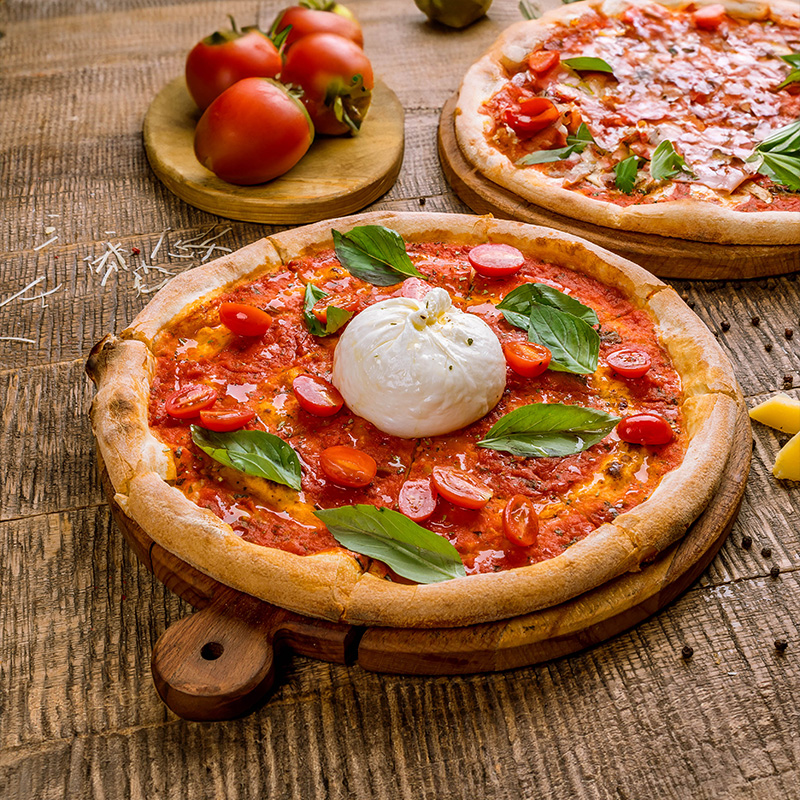
Burrata / Fresh Mozzarella
Texture/Style: Soft Cheese
What it’s like: Delicate, Soft & Buttery
Similar to other fresh cheeses, fresh mozzarella (also known as mozzarella fresco) is high in water content and therefore low in fat. This cheese has a soft, moist texture and is full of milky flavour. It is sold in a brine, whey or water solution to help retain its moisture and shape. It is available in curd form (to pull your own fresh mozzarella by hand), in logs, or balls called Bocconcini. Although most mozzarella is now made from cow’s milk, true buffalo mozzarella (made from the milk of the water buffalo) is highly prized around the world.
Compared to mass-processed mozzarellas, the freshly made variant is creamier and much softer, with a slightly acidic or lactic taste. Because of its firmer texture, it has gained popularity as a slicing cheese on pizzas or flatbreads, snacks, salads or vegetables. It pairs well with fresh tomatoes, pesto, fruits, olives, basil and tapenade.
Fresh mozzarella is best consumed at room temperature to enjoy its delicate flavour. Try it with a Cava or other sparkling wines.
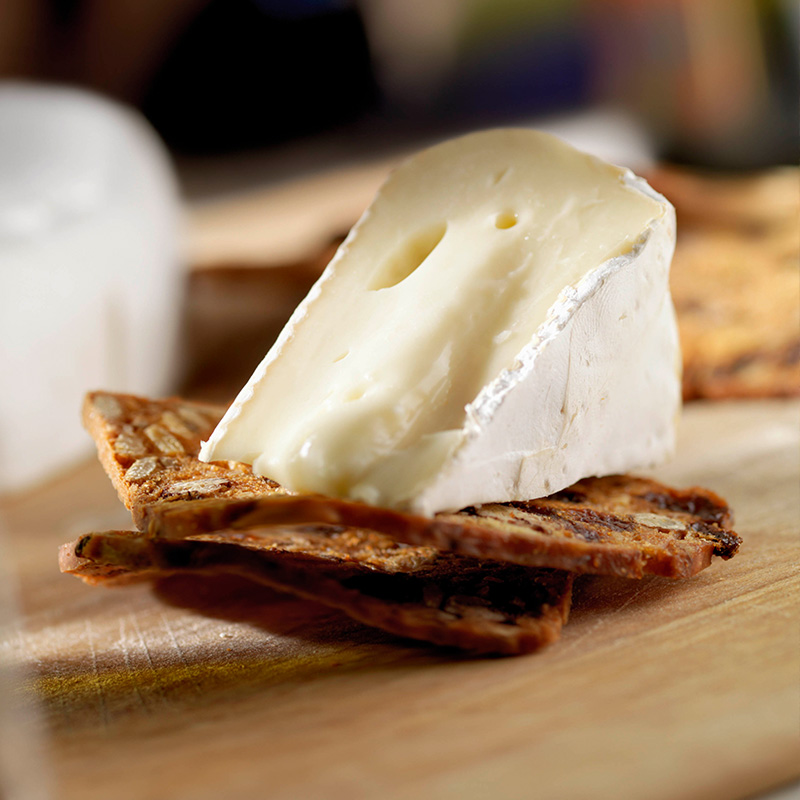
Brie
Texture/Style: Soft Cheese with White Mould
What it’s like: Rich, Mild & Creamy
Brie, dubbed the “Queen of Cheeses”, is probably the most well-known French cheese. It is a soft cheese named after the French region Brie, where it was originally created. This cheese has a rich history; several hundred years ago, it was one of the tributes which had to be paid to French kings.
Brie comes as either a 1 or 2-kilogram wheel and is packed in a wooden box. The cheese is slightly pale in colour, with a greyish tinge under the rind. One of the great dessert cheeses, its flavour varies depending on the ingredients added during production. In order to enjoy the taste fully, brie must be served at room temperature.
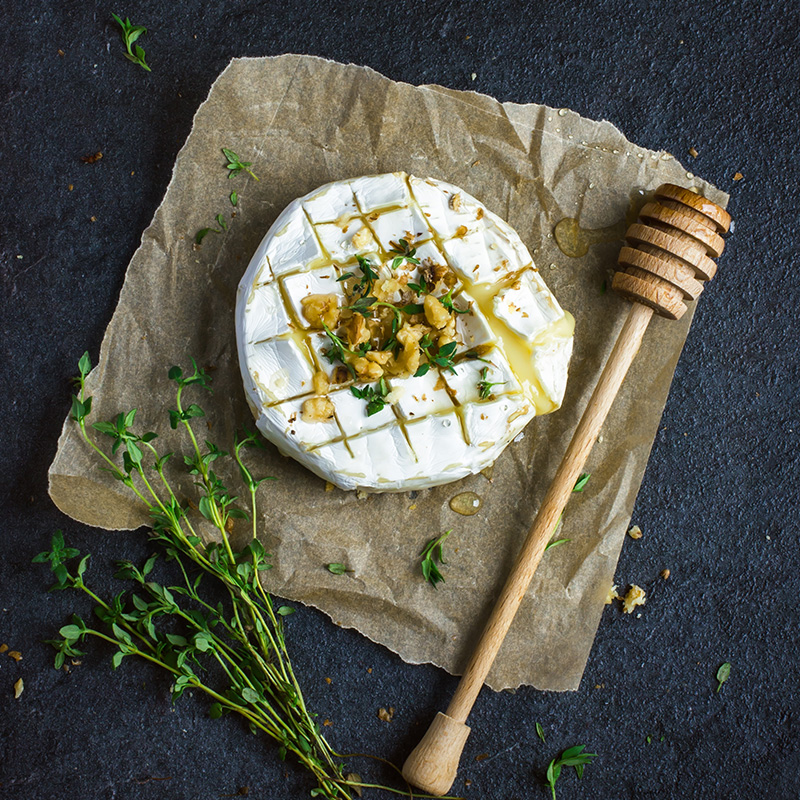
Camembert
Texture/Style: Soft Cheese with White Mould
What it’s like: Rich, Earthy & Creamy
Freshly made camembert is bland, hard and crumbly in texture. It is placed on shelves to age, and as the cheese matures, it develops its typical smooth, runny interior and white bloomy rind. The rind, which is edible, is caused by a white fungus called penicillium candidum.
The longer the cheese ages, the softer its texture and the stronger its flavour becomes. Young camembert has a milky and sweet taste, while mature camembert has a pungent aroma and a rich, buttery flavour.
Camembert is best paired with a light red wine such as Beaujolais, Chenin Blanc, Saint-Émilion or Saint-Estèphe, or traditionally, a glass of Normandy cider.
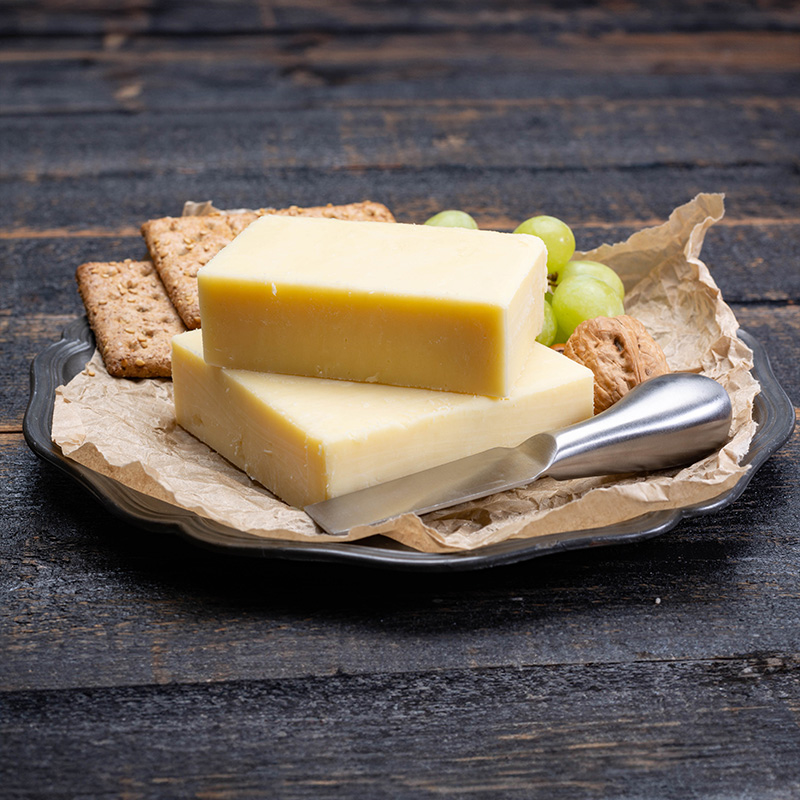
Cheddar
Texture/Style: Semi-Hard Cheese
What it’s like: Rich, Sharp & Nutty
Cheddar cheese is a hard, natural cheese made from cow’s milk. It has a slightly crumbly texture if properly cured and if it is too young, the texture is smooth. It gets a sharper taste as it matures over a period of time between 9 to 24 months.
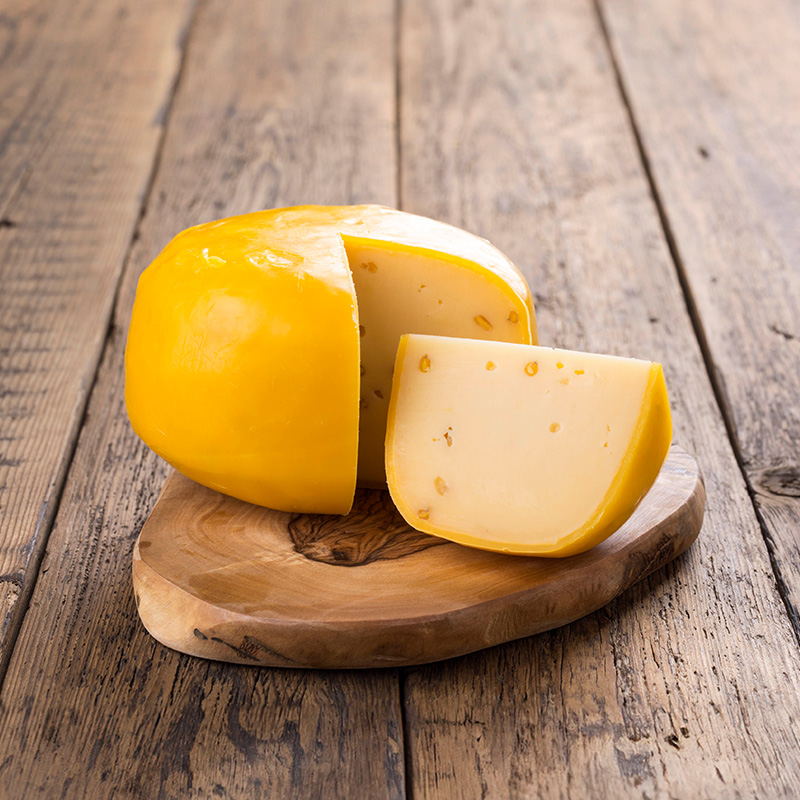
Gouda
Texture/Style: Semi-Hard Cheese
What it’s like: Mild, Creamy & Buttery
Gouda, or “How-da” as the Dutch say, is a Dutch cheese named after the city of Gouda in the Netherlands. It is the most popular Dutch cheese in the world, accounting for 50–60% of the world’s cheese consumption. This semi-hard cheese is celebrated for its rich, unique flavour and smooth texture.
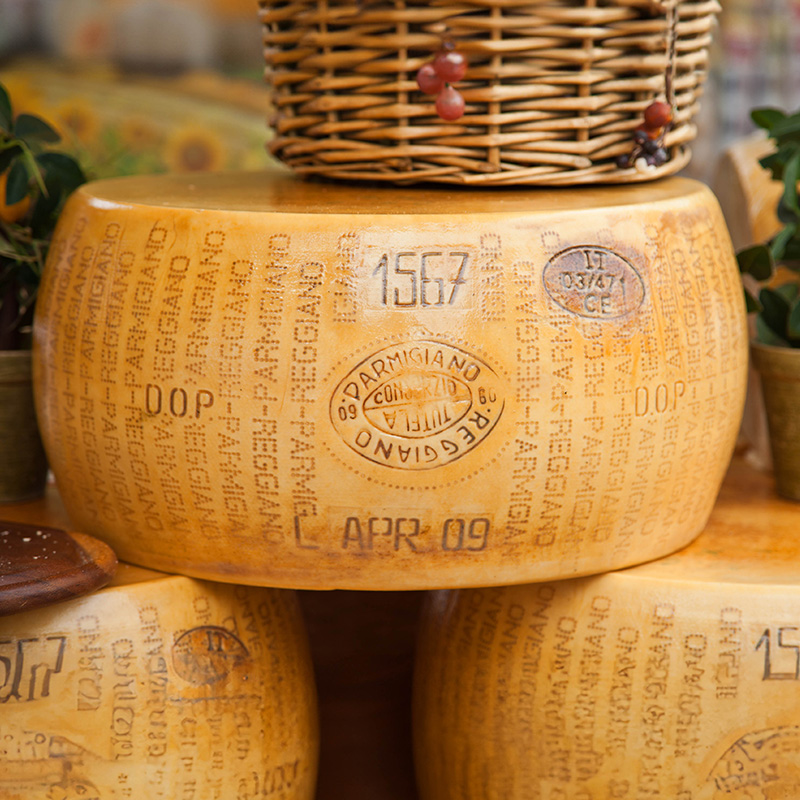
Parmigiano Reggiano / Parmesan
Texture/Style: Hard Cheese
What it’s like: Sharp, Complex & Nutty
Parmigiano Reggiano (or parmesan in English) is known as the “King of Cheeses” and is a world-renowned cheese. The name “Parmigiano Reggiano” is legally protected in the European Union, which means that only cheeses produced in the Italian provinces of Parma, Reggio, Emilia, Modena, Bologna and Mantua are allowed to bear the name Parmigiano Reggiano. Outside the European Union, the name “parmesan” can be used for similar cheeses.
Because it is widely imitated, Parmigiano Reggiano is subject to very strict rules and regulations, for example, it must be made with the same 3 natural ingredients that have been used for over hundreds of years, and it must be aged for at least 12 months before it can be sold in stores.
While “imitation” parmesan may have a bitter taste, true Parmigiano Reggiano is fruity and nutty in taste, and has a hard, gritty texture. It is mostly grated over pastas, used in soups and risottos. It is also eaten on its own as a snack.
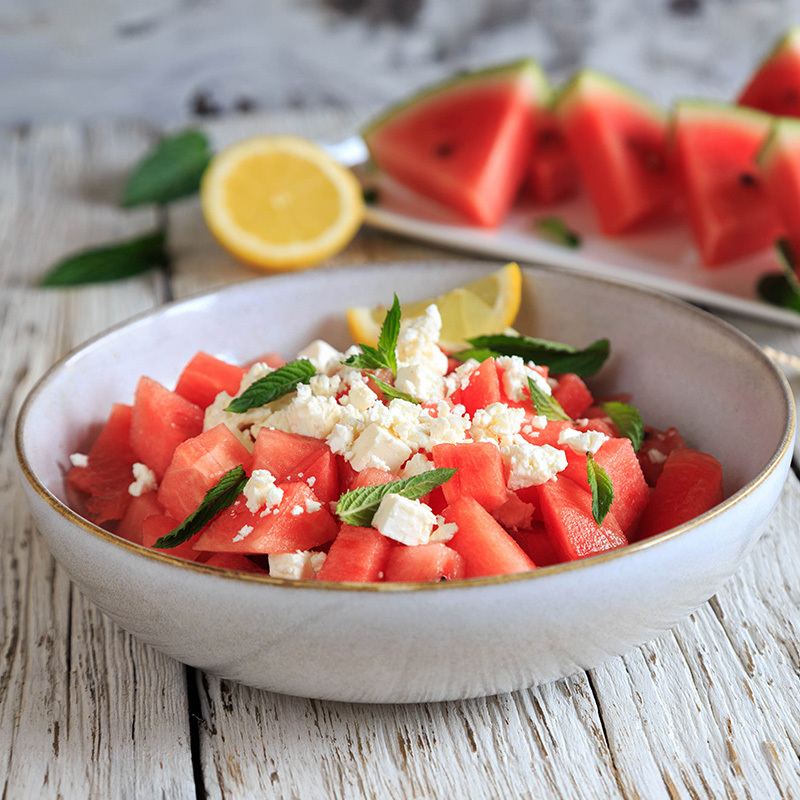
Feta
Texture/Style: Fresh & Curd Cheese
What it’s like: Crumbly, Tangy & Salty
Feta is a pickled curd cheese that has a salty and tangy taste due to being cured in brine. The cheese’s texture depends on its age — it can be extremely creamy, or crumbly dry.
The cheese can be used as a table cheese or melted on a traditional Greek salad, spanakopita, pizza or pie. It tastes delicious with olive oil, roasted red peppers and nuts. If required, it can be washed under water to remove the extra saltiness. Pair feta cheese with beer or wines such as Pinot Noir, Sauvignon Blanc and Zinfandel.
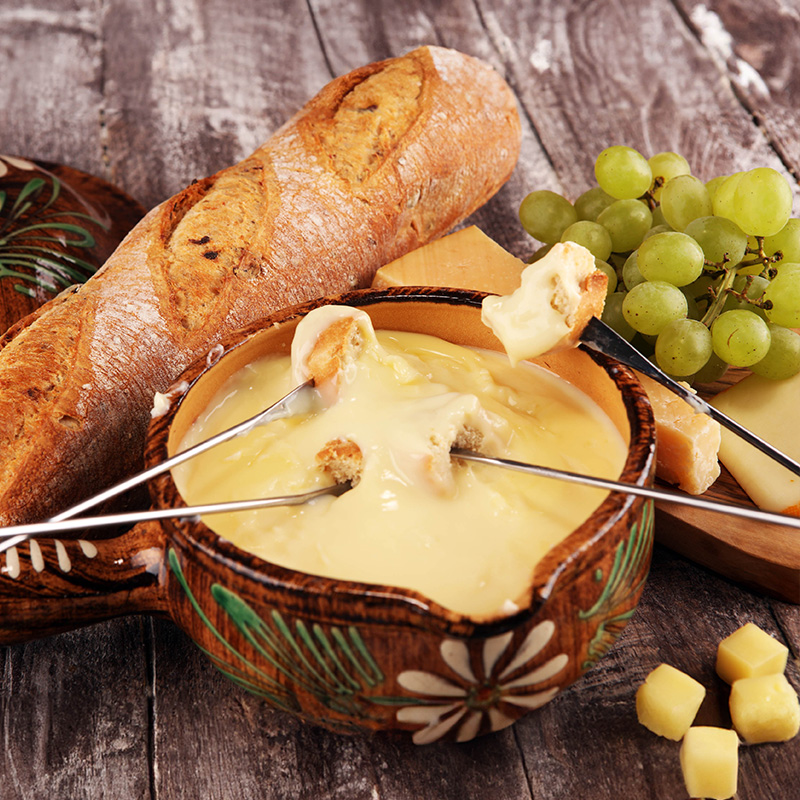
Gruyère
Texture/Style: Hard Cheese
What it’s like: Savoury, Earthy & Complex
Gruyère is a creamy, unpasteurised Swiss cheese, with a natural rusty-brown rind that is hard and dry. The cheese is a darker yellow than Emmental, but its texture is more dense and compact.
Gruyère is sweet and a little salty. When young, it is creamy and nutty, but after maturation, it becomes more earthy and complex, and tends to have small cracks that give it a slightly grainy texture.
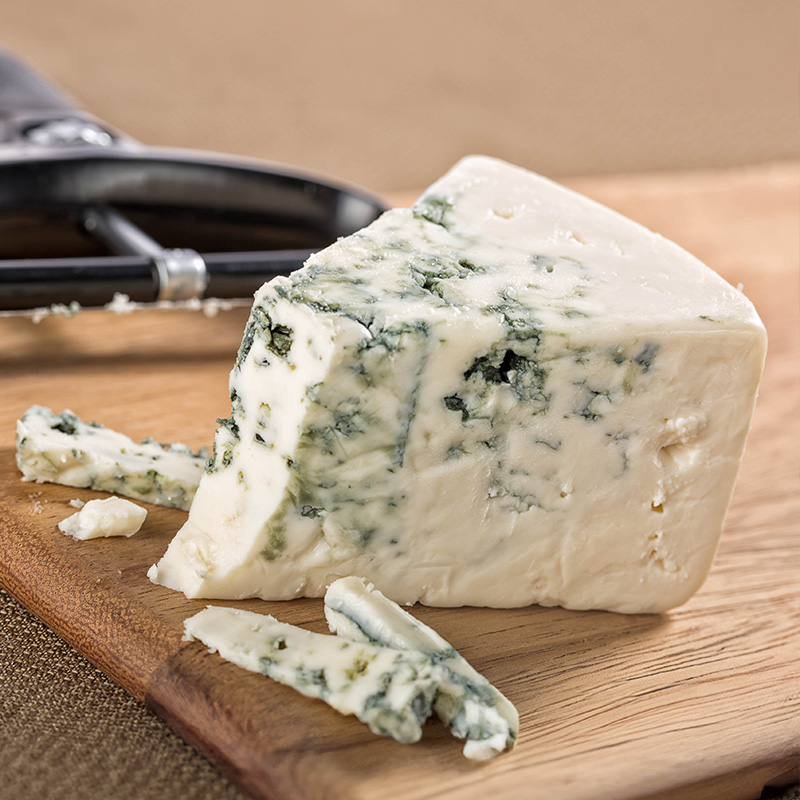
Gorgonzola
Texture/Style: Blue Cheese
What it’s like: Rich, Creamy & Pungent
Gorgonzola is one of the world’s oldest blue-veined cheeses. Generally, it takes 3–4 months to attain full ripeness.
The cheese has a crumbly and soft texture with a nutty aroma, and can have a mild to sharp taste depending on its age. Gorgonzola Dolce — also called Sweet Gorgonzola — and Gorgonzola Piccante — also called Gorgonzola Naturale or Gorgonzola Montagna (Mountain Gorgonzola) — are its two varieties, which vary in their age.
Gorgonzola can be consumed in many ways. It is served with wines like Zinfandel, Sauternes or a red Bordeaux blend.
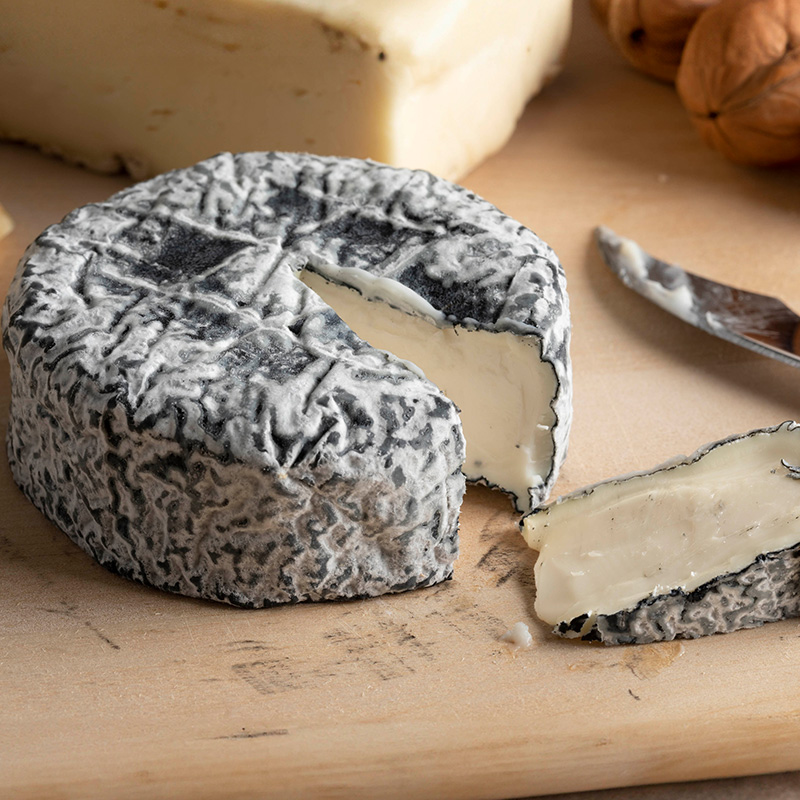
Chèvre
Texture/Style: Goat Cheese
What it’s like: Creamy, Smooth & Distinctive
Chèvre (French for “goat”) is cheese made from goat’s milk. It is a popular choice among the elderly and children, who are more likely to show low tolerance to cow’s milk. Goat cheese is also lower in fat and higher in Vitamin A and potassium. A majority of chèvre come from France, the most famous among them being Bucheron, Chabis and Crottin de Chavignol.
Goat cheeses have a unique, tart and earthy flavour that sets them apart from cow cheeses. This distinctive tang and aroma grows robust and bold as it ages. The flavour and aroma of goat cheese relies on its moisture, density, ageing and flavouring. It can feature a soft, semi-soft, firm or hard texture that indicates its moisture content.
Goat cheese comes in many sizes and shapes such as round patties, log shapes, drum shapes, pyramids, round loaves, long loaves etc. Chèvre makes an excellent dessert cheese, and is also served as a snack or with pre-dinner drinks.
